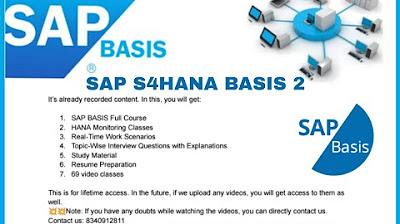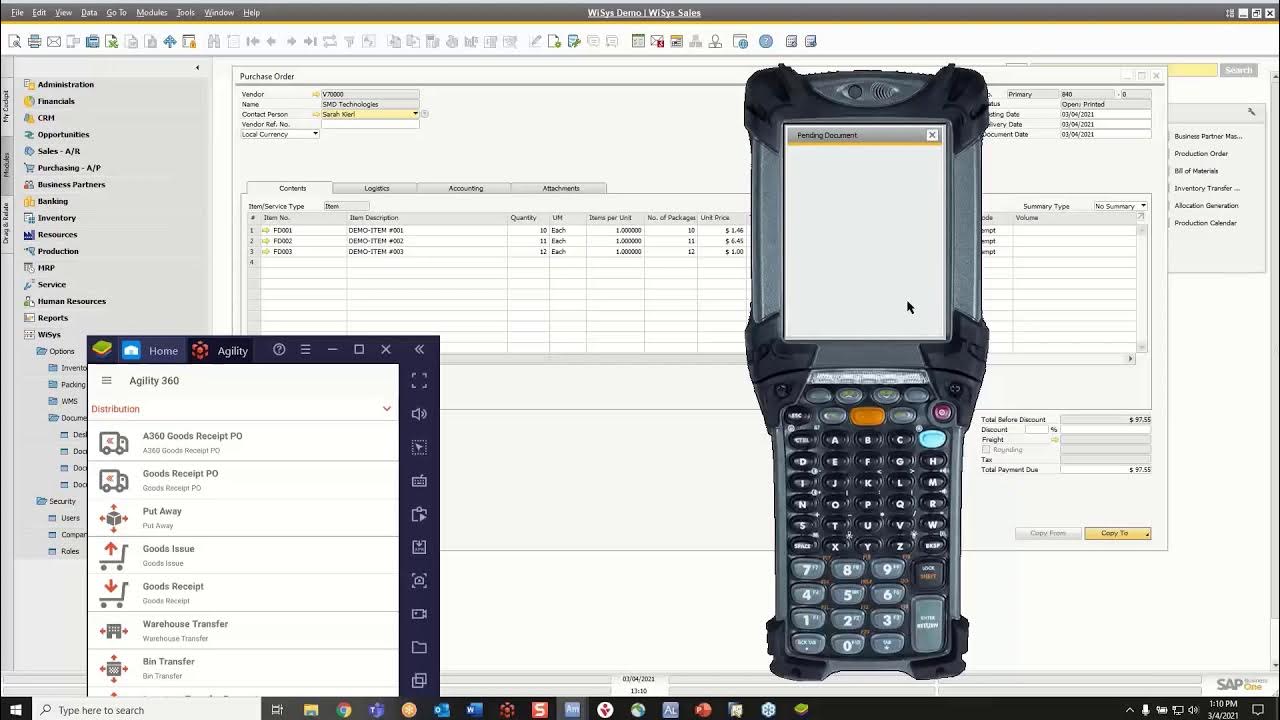What Is the Material Ledger and Actual Costing with SAP S/4HANA?
Summary
TLDRThis video provides a comprehensive overview of the SAP S/4HANA material ledger and actual costing functionalities, highlighting key changes from previous versions. It emphasizes that the material ledger is now mandatory for inventory valuation, enabling dynamic reporting through the universal journal and improved scalability. The video explores various valuation views, such as legal, group, and profit center valuations, along with multi-valuation ledger options. It also covers actual costing processes, including price determination, settlements, and post-closing adjustments, offering insights into how businesses can optimize their SAP S/4HANA implementation for better financial reporting and inventory management.
Takeaways
- 😀 Material Ledger is now mandatory in SAP S/4HANA for inventory valuation, replacing Materials Management tables.
- 😀 The Material Ledger enables dynamic reporting and supports advanced analytics tools like SAP Fiori.
- 😀 Inventory valuation is now integrated into the Universal Journal, providing a single source of truth for financial data.
- 😀 Actual costing identifies the difference between standard price and actual procurement price to determine real material costs.
- 😀 The Material Ledger allows for multi-currency support and multiple valuation views (legal, group, profit center).
- 😀 The system eliminates redundant data by storing inventory values in both Material Master and Material Ledger tables.
- 😀 A more efficient locking mechanism has been introduced for handling material documents in SAP S/4HANA.
- 😀 Transfer pricing can be managed within SAP S/4HANA, with different valuation views for inter-company transactions.
- 😀 Parallel valuation views can be assigned to ledgers, allowing for flexible reporting based on legal, group, or profit center views.
- 😀 The Actual Costing Cockpit provides a streamlined process for calculating actual costs, handling cost allocations, and price adjustments.
Q & A
What is the primary change in SAP S/4HANA regarding material Ledger and inventory valuation?
-The primary change is that the material Ledger is now mandatory in SAP S/4HANA. It has replaced materials management tables for inventory valuation, and now inventory valuation is stored in material Ledger tables, providing a more dynamic and powerful reporting capability.
What role does the universal Journal play in SAP S/4HANA material Ledger?
-The universal Journal serves as a single source of truth for inventory valuation in SAP S/4HANA. It integrates data from both material Ledger and Finance, enabling accurate and centralized reporting on inventory values.
Is actual costing mandatory in SAP S/4HANA with the activation of material Ledger?
-No, activating the material Ledger is mandatory, but the use of actual costing remains optional. SAP allows for customization, enabling businesses to choose whether they want to use actual costing alongside the material Ledger.
Can you still use standard or moving average prices to value your inventory in SAP S/4HANA?
-Yes, despite the mandatory activation of the material Ledger, businesses can still use standard or moving average prices to value inventory, as the price control mechanism remains unchanged.
How does the material Ledger enhance reporting capabilities in SAP S/4HANA?
-The material Ledger enables dynamic reporting, supports ad hoc reports via SAP Fiori, and integrates with other analytics tools. It allows for the storage of inventory values in multiple currencies and supports multiple valuation views, enhancing reporting flexibility.
What are the key benefits of activating multiple valuation views in SAP S/4HANA?
-Activating multiple valuation views enables businesses to report according to different accounting standards, such as legal, group, and profit center valuations. It also allows inventory values to be stored in different currencies, improving the granularity and accuracy of financial reporting.
What is the difference between parallel single valuation and multi-valuation Ledger in SAP S/4HANA?
-Parallel single valuation refers to assigning each valuation approach (e.g., legal, group) to a separate Ledger, while multi-valuation Ledger combines all valuation views within a single ledger. Multi-valuation optimizes memory and eliminates separate closing requirements for each valuation view.
How does SAP S/4HANA handle transfer pricing between different company codes?
-Transfer pricing in SAP S/4HANA allows for the valuation of goods and services exchanged between different company codes within the organization. This pricing can be based on cost plus a markup or market prices, ensuring accurate financial reporting and consolidation at the corporate level.
What are the key steps in the actual costing process within SAP S/4HANA?
-The key steps in actual costing include production and process order closure, overhead cost calculation, actual cost split, and actual activity rate calculation. These steps are managed within the actual costing cockpit, which supports parallel processing and detailed settlement of value flows.
What is the role of the actual costing cockpit in SAP S/4HANA?
-The actual costing cockpit in SAP S/4HANA is a tool that allows businesses to perform and manage various steps in the actual costing process, such as price determination, settlement, revaluation of inventory and consumption, and the calculation of periodic unit prices (PUP). It streamlines the entire costing workflow.
Outlines

This section is available to paid users only. Please upgrade to access this part.
Upgrade NowMindmap

This section is available to paid users only. Please upgrade to access this part.
Upgrade NowKeywords

This section is available to paid users only. Please upgrade to access this part.
Upgrade NowHighlights

This section is available to paid users only. Please upgrade to access this part.
Upgrade NowTranscripts

This section is available to paid users only. Please upgrade to access this part.
Upgrade NowBrowse More Related Video
5.0 / 5 (0 votes)





